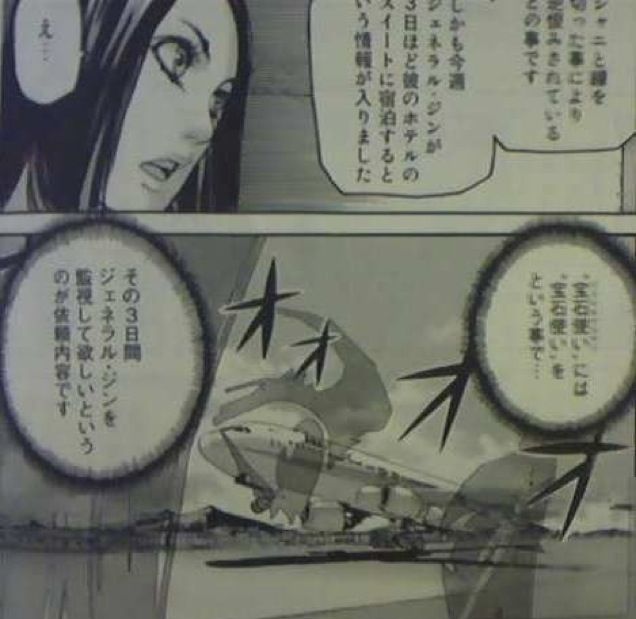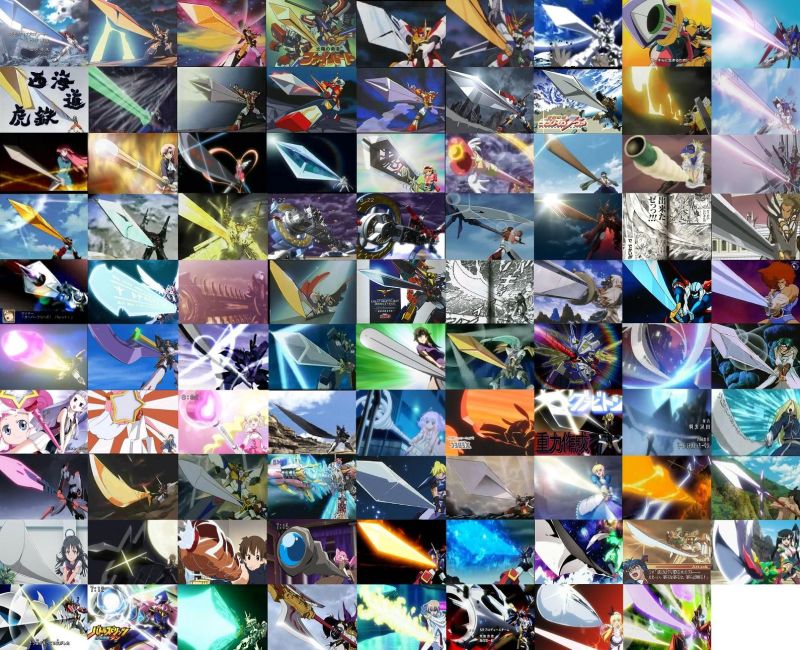As with many forms of art and entertainment, the process of drawing anime must have evolved over time. CGI isn't uncommon in modern anime, as scenes or whole shows can be completed using nothing but a computer. What are some of the modern innovations in animation techniques (primarily for anime)?
-
2How recent are we talking here? Last ten years? Last twenty years?– TorisudaCommented Aug 31, 2016 at 0:55
-
that would be the moe blob– anonCommented Aug 31, 2016 at 1:16
-
1Computerization is the major innovation if you're looking a decade or more back in time.– senshinCommented Aug 31, 2016 at 2:52
-
1@ton.yeung Let's call it "a joke with an infinitesimal grain of truth in it".– TorisudaCommented Aug 31, 2016 at 5:10
-
1I'd like to try and edit this question to bring it back on topic, but I'm not sure how to narrow the scope without invalidating The Pickle Tickler's excellent answer.– TorisudaCommented Sep 5, 2016 at 5:40
1 Answer
Due to the lack of time period in the question, here's a more blanket overview of anime innovation.
The Evolution of Animation Techniques
The Celluloid Shift
The first few animations were made by Winsor McCay in 1914. Unfortunately, there are not many copies of this animation remaining, but it sparked a movement that was known as the Celluloid Shift in animation history. This process involves drawing a background first, and then drawing different layers for characters on top of it.

This allowed for animators to make more complex scenes than just simple sketches. This is the method that Walt Disney used when he created Steamboat Willie (1929) and Snow White and the Seven Dwarfs (1937). While this isn't Japanese animation, or anime, this method of drawing layers is what was used in early animation projects from any country or origin {1}.
It wasn't for a while that the now regular episodic Japanese anime made an appearance. From this A&M SE question, people have largely agreed that おとぎマンガカレンダー, or Otogi Manga Calendar, was the first anime series ever created, which was published in 1961. However, there were other short clips, like Katsudo Shashin (1907) and なまくら刀 (An Obtuse Sword) (1917), which were each 3 seconds and 120 seconds, respectively. These first short animations and full anime series use the method brought on by McCay with the Celluloid Shift. It is interesting to note that McCay brought this method to the west in 1914, but it is seen being used in animations in the east as early as 1907.
Computer-Aided Frame-by-Frame Animation
After animation was gaining popularity as a medium of entertainment across the globe, the computer began aiding animators in their creation of new works. When the computer first entered the world of animation, it was used to make the process of redrawing parts of the scene much less arduous, by introducing the frame-by-frame method.
In the frame-by-frame method, an animator draws an initial scene on the computer. This can be done with a stylus on the computer screen, or it can be done with special external computer peripherals that will translate a drawing into an image on the computer screen. Then, the animator advances the screen by one frame (if the movie takes place at 60 fps or frames per second, then the animator advances the scene by 1/60th of a second). The drawing from the last frame stays slightly grayed out for the animator to reference, and the drawing from the current frame appears darker on the computer screen. These allows the animator to create reference points when animating. With the previous method in the Celluloid Shift, this method could be emulated with very thin tracing paper, where an artist would draw one frame, and then lay a thin sheet of paper over it so they could see it while drawing the next frame.
Here is a great video that shows exactly how frame-by-frame animation works (this is still largely used in the anime industry today), as it is hard to visualize from my description alone. It is important to note that in this method the animation is still largely drawn by hand; even though this method uses a computer, the computer doesn't actually do the drawing, the animator does.
Computer-Generated Imagery
However, the most modern innovation with anime and animation is CGI, or computer-generated imagery. Similar to frame-by-frame animation, CGI is accomplished with the use of a computer (thus the phrase computer in the name), but different to all previous animation methods, the computer draws the scene (as instructed by the animator), rather than the animator drawing the scene.
This method has become popular in the west with studios like Pixar and Dreamworks. Some of the most popular include Toy Story (1995) and The Incredibles (2004), as well as many, many others. However, this animation innovation has been used fairly regularly in other shows as well. More popular in mecha anime, at the dawn of the CGI era certain scenes would be completed with CGI while the majority of the work was done with computer-aided frame-by-frame animation. This is because often CGI allows animators to create and draw scenes that are incredibly complex or too hard to draw by hand. It was more popular as CGI was emerging to use this cross-method animation, where parts were animated with CGI and other sections were animated with the frame-by-frame method. There are many, many other examples of this, but the one I found that showcases this fusion of the two methods is this scene from the second season of Aldnoah.Zero (2014), which you can see CGI being used for the vehicles and mechs but regular frame-by-frame for the people and other scenes (beware, this clip contains spoilers). Another show that relied heavily on both frame-by-frame and CGI animation is Initial D. You can watch this first episode of Initial D and seen the stark contrast between the two animation methods. Whether this cross-method animation was an effective way of creating a show is primarily opinion-based, however, and is a whole different question for later.
In today's modern world, however, CGI is making the transfer from being used in conjunction with frame-by-frame animation to being used for the whole show. There have been a couple shows like this recently (and probably many more that I haven't watched), but the two that are in my mind right now are Ajin, whose trailer can be seen here, and the new sequel of Berserk, whose trailer can be seen here. As computers become more powerful and more available, it seems that CGI is taking over more shows, but I doubt it will fully replace frame-by-frame animation (on a personal note, if you haven't seen Ajin or Berserk, I HIGHLY suggest watching the anime or reading the manga for both of them) {2}.
Here is another great article that discusses the evolution of graphics in anime, from a more subjective lense:
Those who watch older versions of anime movies will immediately notice the difference in graphics. First of all they were designed in 2D and the special effects were considerably simpler. It is amazing the special effects seen in new anime shows these days. There are even 3D versions of certain anime movies that delight their audience with incredible action and effects.
While this section stems from general animation techniques, you have to remember that anime is an animation, and its history has largely followed the same technique evolution as the animation industry as a whole.
The Evolution of Anime Trends/Styles
In addition to different innovations in animation techniques, there have also been different trends and innovations that have to do with style. This has less to do with the different techniques of drawing anime, and more with the different styles and trends that have emerged from anime over time. The full list can be read from here.
While this section isn't the first thing you think of when asking "What innovations are there in anime techniques," I would argue that it is still relevant because it is how animators are changing trends and innovating in their animation styles. These are not styles that are done by just one or a few animators or shows, but rather trends that span across the whole anime industry {3} {4}.
Sources:





